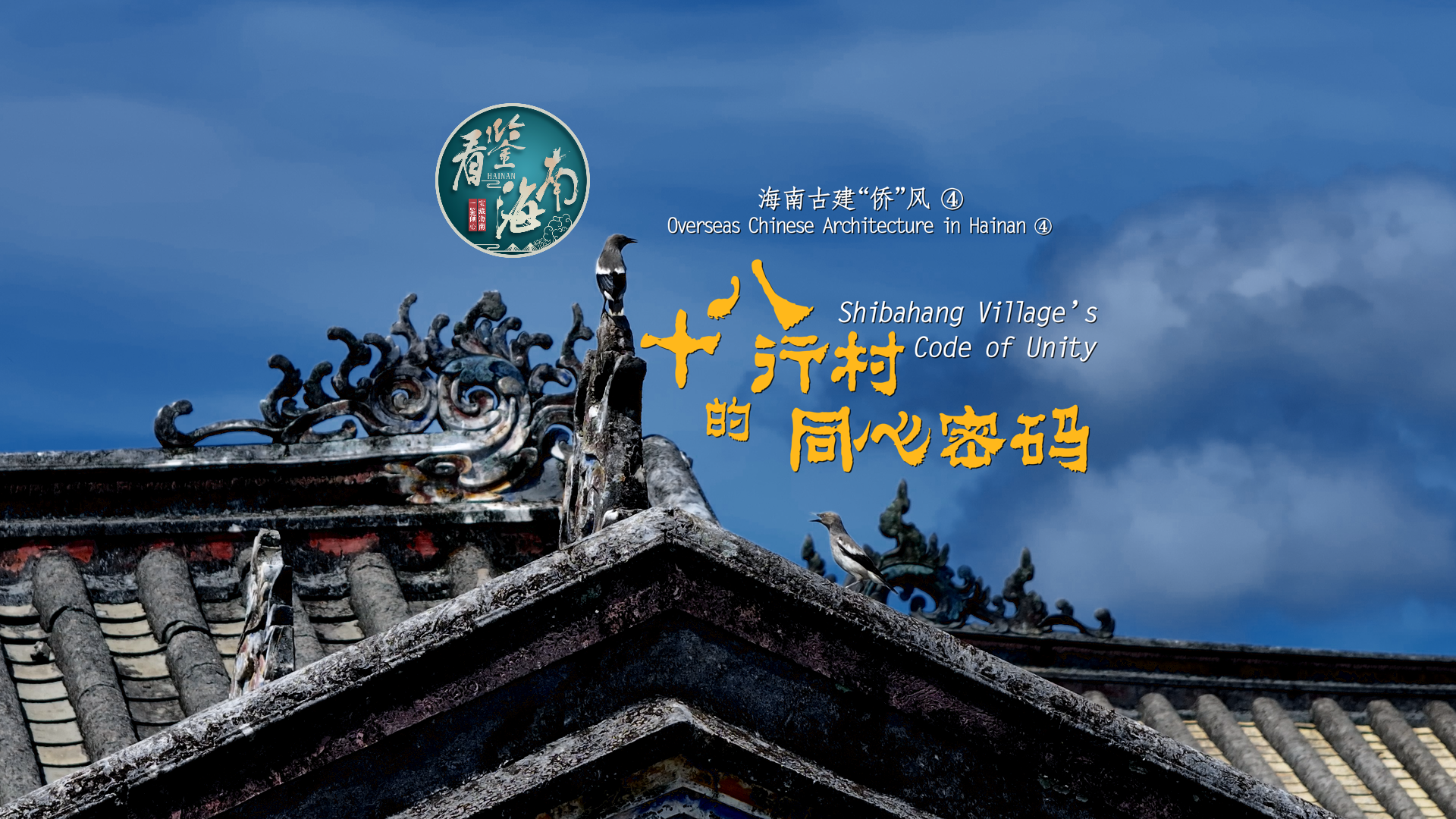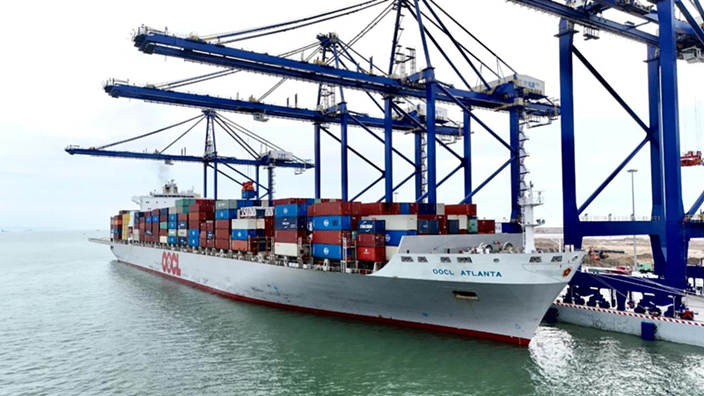
The fishing community of China’s southern island province of Hainan has been living off the bounty of the sea for generations. As the three and a half month summer South China Sea fishing moratorium ended on August 16, fishing boats sailed out to sea from every fishing village, port, and dock on the island, bringing back heaps of fresh seafood for eager foodies to enjoy. Today, let’s take a look at the history of fishing culture and fishing village life in Hainan.
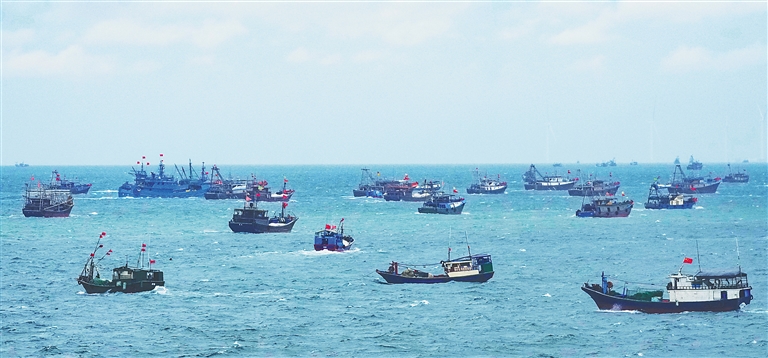
Hundreds of fishing boats set out from Diaolou, Lin’gao, as Hainan’s annual fishing moratorium was lifted on August 16. (Photo: Hainan Daily)
Preparing for the voyage
In the era of sailboat fishing, Hainanese captains, who were well acquainted with the monsoons, tended to head out on long fishing voyages after the Winter Solstice (a Chinese solar term that occurs annually on December 21 or 22) and returned to port between the Qingming (Tomb Sweeping) Festival and Grain Rain (a solar term that falls in the first half of April).
Coastal dwellers also took advantage of the ebb and flow of tides to catch seafood. Most fish prefer to feed in moving water, so knowing the tide schedule is crucial for inshore fishing.
Since they relied so heavily on fishing boats for their livelihood, coastal Hainan residents mastered the craft of boat-building quite early. Some master shipwrights, operating near fishing ports, even crafted large sailing boats weighing up to two or even three hundred tons.
Before the 1990s, boatyards producing wooden boats could be seen in Danzhou, Lin’gao, and Sanya. Now, Lin’gao shipbuilding and Hainan’s traditional inshore fishing skills have both been recognized as Hainan intangible cultural heritage arts.
In addition to sturdy boats, daily necessities that can be easily stored—such as fresh water, rice, and sweet potatoes—must also be prepared before a long sea voyage. According to old-timers, sometimes live poultry or even small pigs were brought on board to supply fresh meat or for use in celebrating traditional festivals while at sea.
These days, thanks to improved living conditions, items like rice, vegetables, fruit, peanut oil, and mineral water are all loaded on board in preparation for extended fishing trips.
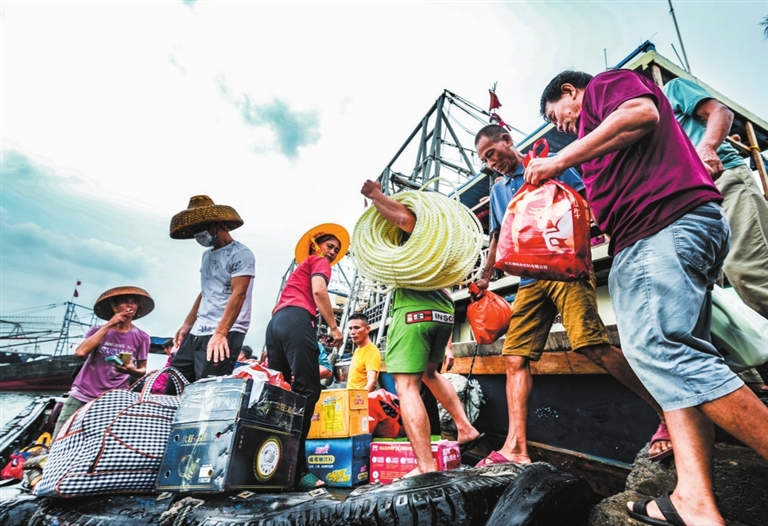
Supplies are loaded onto the boat on August 16th in preparation for the start of the fishing season. (Photo: Liu Sunmou / Hinews)
The sea is a mighty force that must be respected. Before setting out, Hainanese seafarers hold special ceremonies to pray for a safe voyage and an excellent harvest.
These ceremonies have become part of the local folk culture, and attract many visitors. In 2021, Qionghai’s Xiongdi Gong (also known as “Hainan 108 Brothers” worshipped as protector deities by local seafarers) prayer ceremony was classified as a national intangible cultural heritage art.
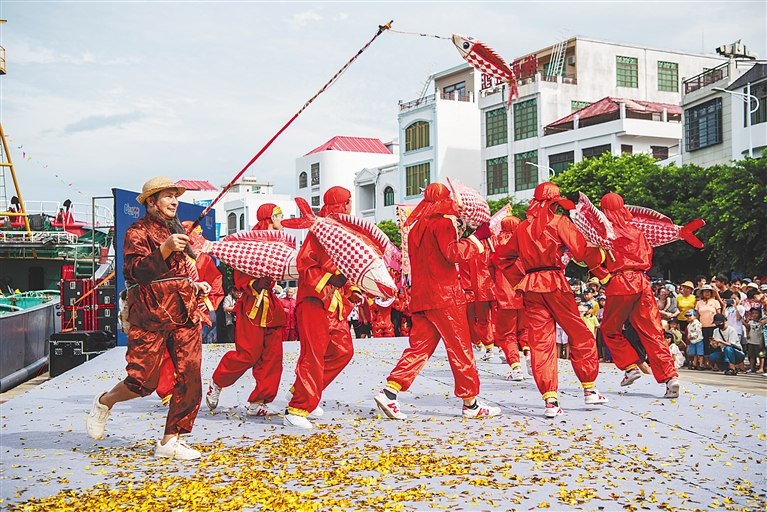
Fishermen perform a fish lamp dance in Tanmen, Qionghai. (Photo: Hainan Daily)
Working together to harvest the sea
On the sea, it’s important for the crew to work closely together. Each person has different responsibilities. The captain plans the overall voyage and deals with emergencies. Chefs are responsible for making sure everyone has nutritious food to eat. There are others who handle fishing, navigation, keeping watch, and monitoring the weather.
Nowadays, the division of work on boats has changed thanks to the improvement in fishing boats and navigation equipment. Fewer hands are needed to operate each boat.
In the past, before the advent of high-tech navigation equipment, navigation was done by hand. Experienced navigators found their way by close observation of the moon, the stars, birds, and fish, especially when bad weather was on the horizon.
Seabirds called Boobies served as flying guides for fishing boats, as these birds have an excellent sense of direction and distance, going out regularly each morning to find food and returning to their nests each night. Navigators could calculate the location of their destination island by observing the times and directions of the bird’s flights.
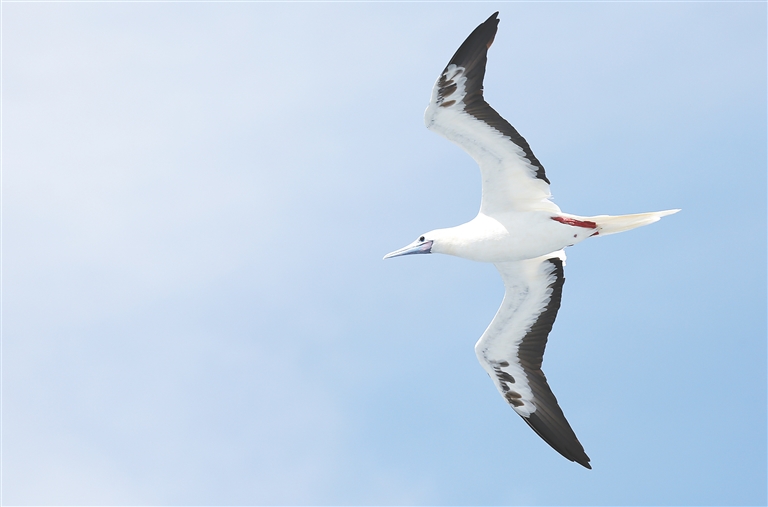
A booby, a type of seabird in the Sulidae family. (Photo: Hainan Daily)
In addition, some fishermen could even spot submerged rocks by observing the changes in waves.
Divers often used special tools to measure the depth of the seawater. A lead weight on display in the China (Hainan) Museum of the South China Sea is one of those tools. The lead weight was tied to a line and thrown into the sea. The length of submerged line showed the depth of the water, and a special hole in the weight would even bring up some of the silt from the sea floor for examination.
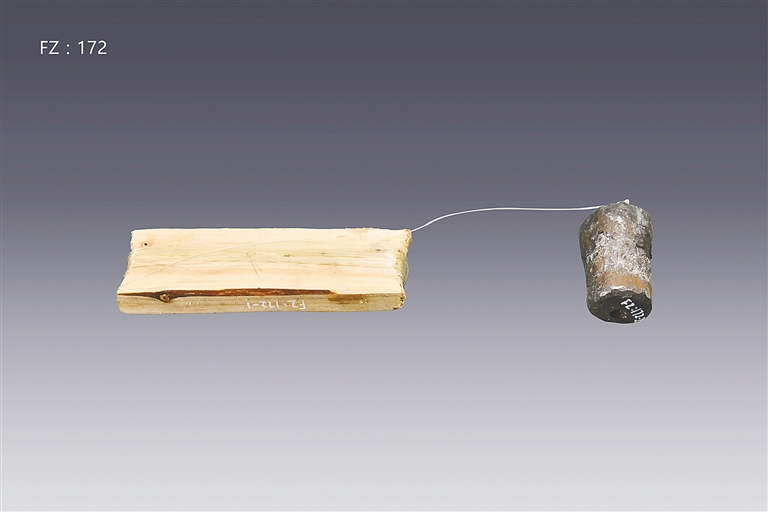
A lead weight used to measure the depth of the water. (Photo: Hainan Daily)
Thanks to the high-tech equipment that most fishing boats now sport, information on the weather, wind, and tides is readily available, and some special equipment even facilitates shipping and fishing.
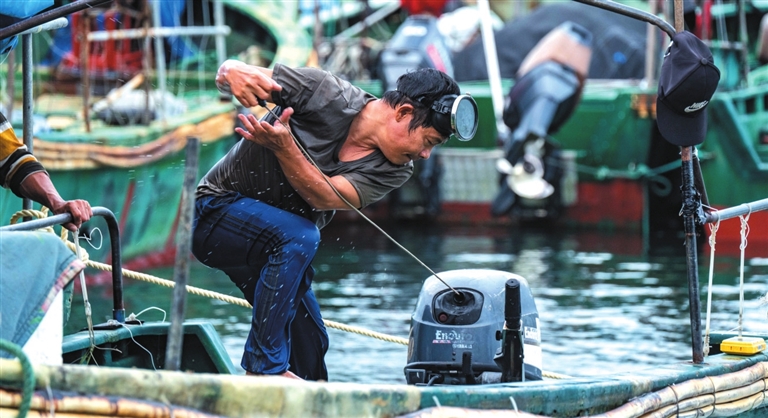
A fisherman starts his boat motor on August 16th as he prepares for the start of the new fishing season. (Photo: Liu Sunmou / Hinews)
Women dominate the fish markets
After bringing seafood to the port, the most important thing is to sell it at a good price. For a long time, fresh-caught seafood was only sold to buyers within Hainan.
With the rapid development of the art of seafaring in the 19th century and the first half of the 20th century, boats began to travel further, allowing the bounty of the sea—including fish, sea cucumbers, and dried oysters—to be traded at other ports across South East Asia, and especially in Singapore.
The fishing markets at local ports date back much further than overseas trading. Here, women play the starring role. At Baimajing Port in Danzhou, women wearing bamboo hats and cloths wrapped over their faces usually gather at the shore early in the morning to greet returning fishing boats.

Women bring the fresh seafood ashore at Baimajing Port, Danzhou. (Photo: Hainan Daily)
When the boats arrive, the women leap into action, some purchasing the fresh-caught seafood, others carrying the seafood to market, and others selling directly to customers. Some women even package seafood such as hairtail and cuttlefish for sale outside Hainan. Their hard work makes the port hum with activity.
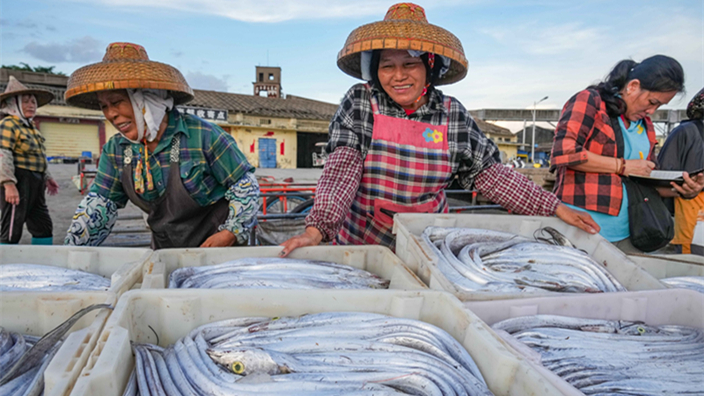
Women sell seafood ashore at Baimajing Port, Danzhou. (Photo: Hainan Daily)
Overseas Chinese Architecture in Hainan ④: Shibahang Village’s Code of Unity
05:47, 27-June-2025World Insect Week: Fantastic Flying Creatures in Hainan’s Rainforests
05:47, 27-June-2025Yangpu International Container Terminal Opens Direct Shipping Route to India
05:47, 27-June-2025It's time for Hainan "Village VA"!
03:13, 26-June-2025Surprise Delivery of Hainan Gifts!
03:13, 26-June-2025One invitation and they came to Hainan right away! Look, they are arriving!
03:12, 26-June-2025By continuing to browser our site and use the services you agree to our use of cookies, Privacy Policy and Terms of Use. You can change your cookie settings through your browser.
